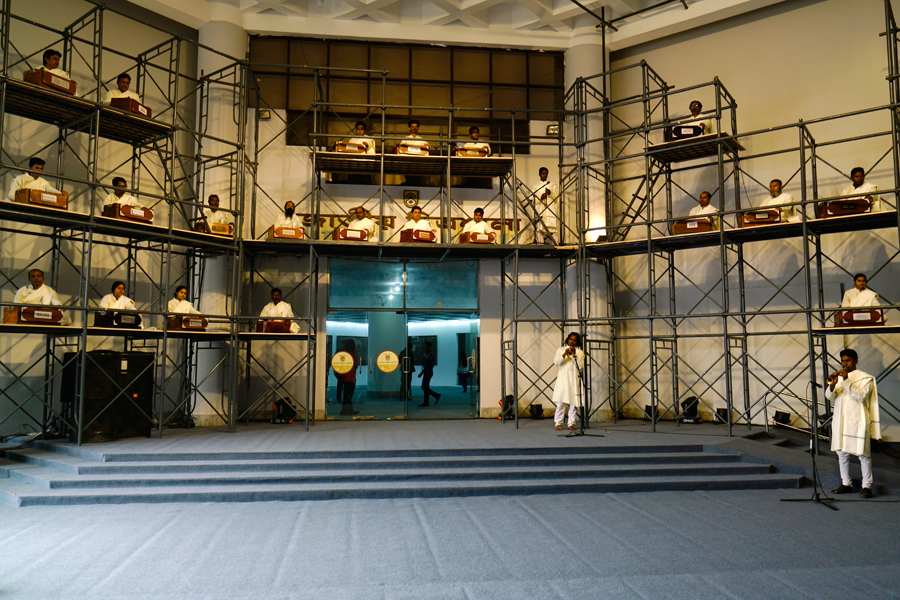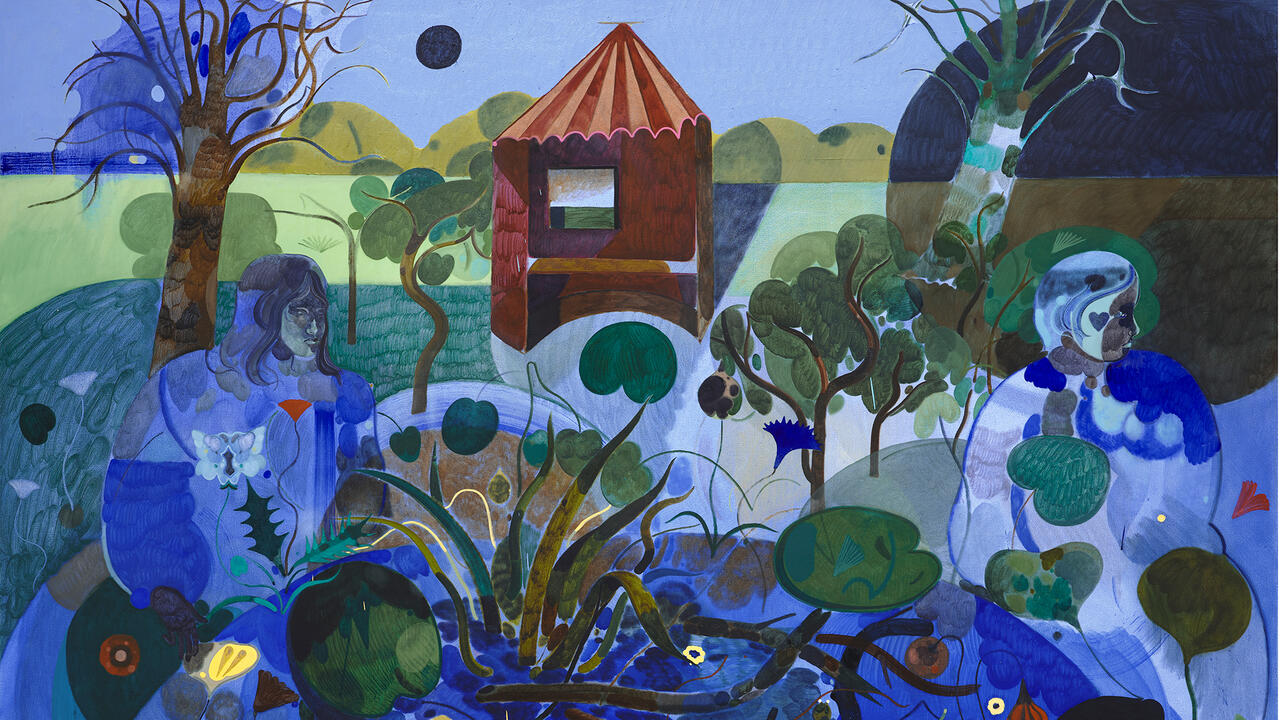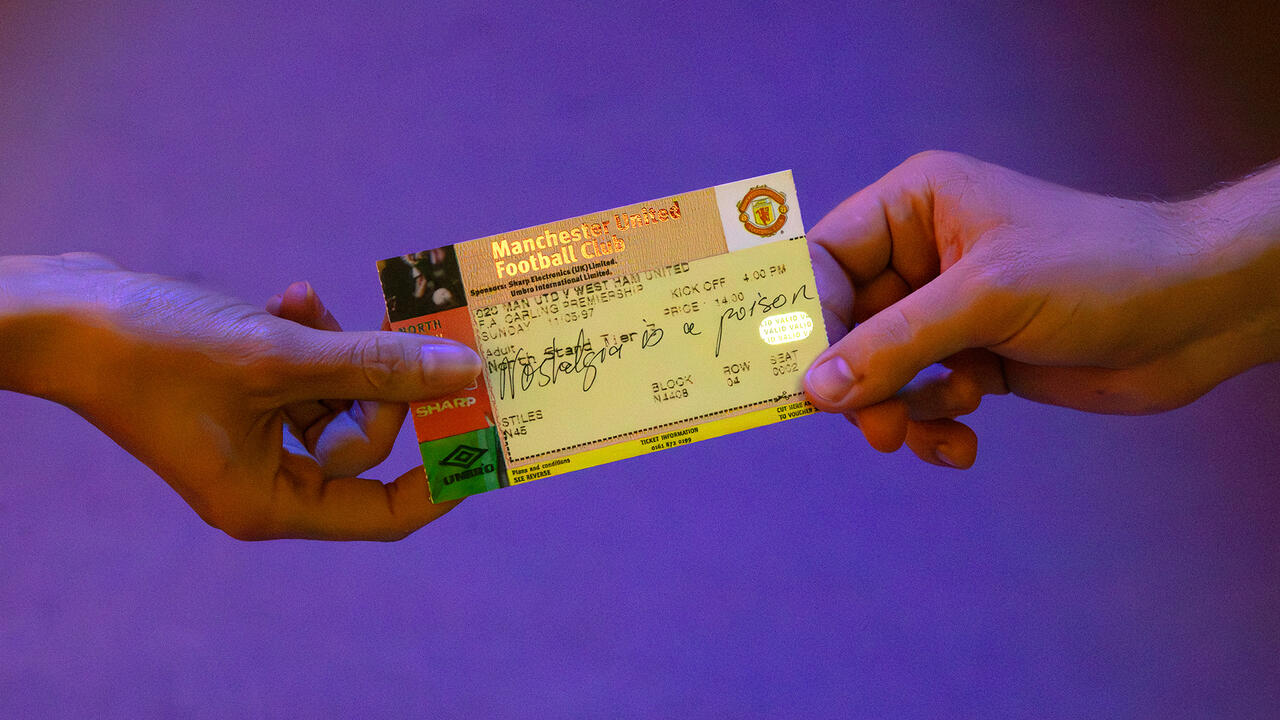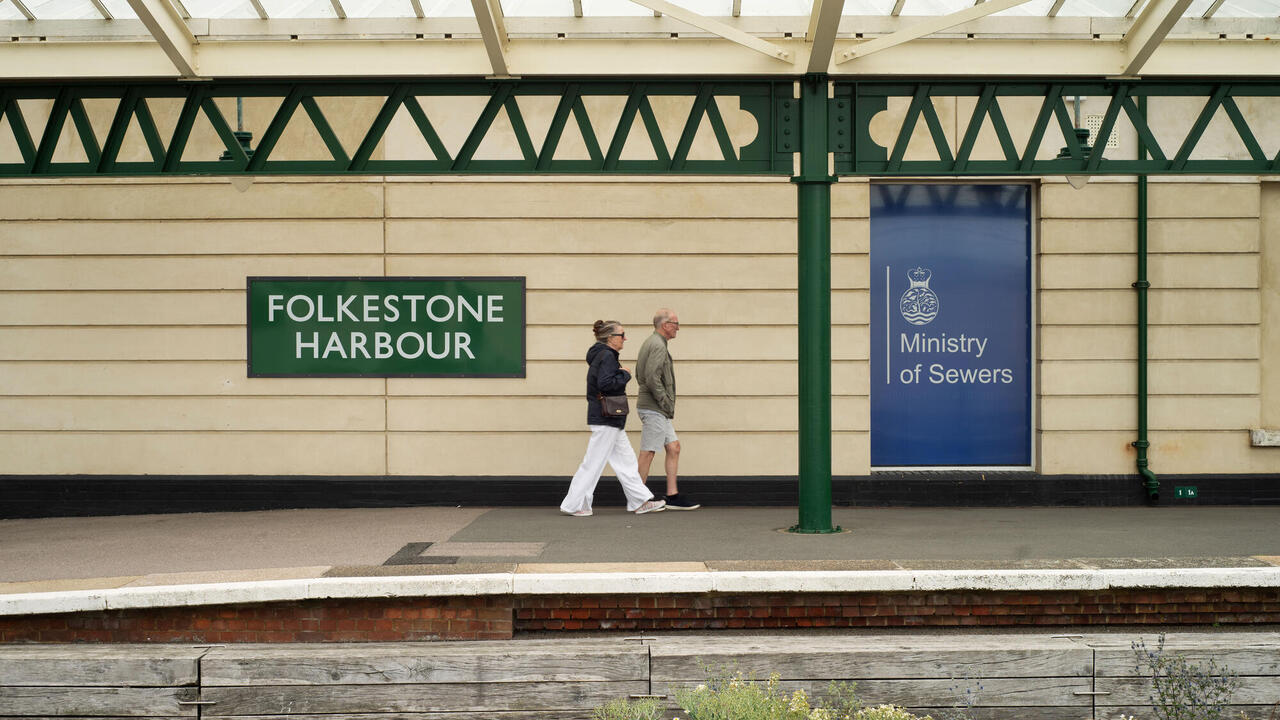How to See from Somewhere Else – the 4th Dhaka Art Summit
Can an alternative arts network, unmediated by the West's commercial capitals and burgeoning arts economies of China and India, be built?
Can an alternative arts network, unmediated by the West's commercial capitals and burgeoning arts economies of China and India, be built?

It is a long journey from London to Dhaka. Having exhausted better entertainment options, at a certain point I found myself watching Victoria and Abdul (2017), Stephen Frears's schmaltzy based-on-a-true-story feature about Queen Victoria's intense and controversial friendship with a young Indian Muslim during the final years of her life. The aged Empress is played with cantankerous aplomb by Dame Judi Dench; the handsome Abdul Karim (Ali Fazal), is a jail clerk brought to Britain to present the sovereign with a commemorative Mughal coin to celebrate her golden jubilee. You don't need to have seen the film to know how it goes: no-one understands the long-suffering Empress but the low-born clerk, whom she adores and supports in the face of all opposition – to the horror of the royal household and Prince of Wales. Her imperial subject, wise beyond his meagre education, is, in turn, unquestioningly devoted to his queen.
Victoria and Abdul turned out to be an apt preface to this year's Dhaka Art Summit, where the 'decolonization' of culture(s) is something of a watchword. A Disneyfied vignette of imperialism humanized, the film is a reminder of how vast that task is.

The Dhaka Art Summit was established in 2012 by prominent Bangladeshi collectors Nadia and Rajeeb Samdani, with artistic director Diana Campbell Betancourt. A biennial event that is trying not to be a biennial, the summit has sought to establish itself as a hub for conversations through, about and between artistic and institutional practices within Asia and internationally. In a country with very little arts infrastructure, the aim is to build and support a network unmediated by the institutional behemoths and commercial capitals of the West, and the burgeoning arts economies of China and India. (Although, as the list of partners and co-commissioners – from Prohelvetia to the Liverpool Biennial to White Cube suggests – everyone has a seat at the table.)

Originally conceived as a three-day event, this year's summit was extended to nine days and featured seven curated exhibitions. There was also an exhibition of new works by the 11 Bangladeshi artists nominated for the Samdani Art Award (which for the winner, Mizanur Rahman Chowdhury, will result in a six-week residency later this year at the Delfina Foundation in London); a section dedicated to small presentations by the 12 artist-led institutions that the Samdani Art Foundation has committed to supporting over a three-year period; a programme of 'illustrated lectures' and workshops in an education pavilion designed by the winner of the inaugural Samdani Architecture Award, Maksudul Karim; a large group show of young Bangladeshi artists curated by the director of the department of fine arts at Bangladesh Shilpakala Academy (the summit's host venue); writers' workshops looking at indigenous discourses (developed by the Office for Contemporary Art, Norway); and a lecture programme. The summit ended on the weekend with a two-day symposium and a closing keynote by Gayatri Chakravorty Spivak. In total, the event involved 16 curators (in addition to Betancourt herself), more than 300 artists and around 120 participants in the discursive programmes. Mediators wearing t-shirts reading 'Ask Me About Art' (trained through a series of workshops supported by the Swiss Arts Council and Hochschule Luzern), wander through the spaces which, during the three days of my visit, were full of students, families and businessmen. All this was pulled off in a city where, the smoggy Thursday afternoon of my arrival, it took two and a half hours by car to travel the ten traffic-snarled kilometres between the airport and the hotel.

To will this into existence, then, has been an act of singular ambition on the part of the Samdanis. It is also one of extreme generosity – not only financial, but also in terms of the openness and diversity of the programming. Exhibitions range from the compactly pedagogical (as in 'One Hundred Thousand Small Tales', Sharmani Pereira's compelling disinterment of Sri Lankan art histories buried by the violence of civil war and Devika Singh's elegant study of the spread of architectural modernism and its ideals across the subcontinent) to the transcendent esoteria of Milovan Farronato's 'Total Anastrophes' – a performative programme that brings the Fiorucci Art Trust's annual 'Volcano Extravaganza' from the Mediterranean island of Stromboli to the auditorium of Shilpakala Academy. Yes, there are structural questions at play here: how much does Bangladesh need contemporary art when a third of the country was under water in September 2017 and it is currently hosting one of the world's largest refugee populations (Rohingya Muslims from neighbouring Myanmar)? But falling down this rabbit hole of reasoning somehow misses the point. (I assume, however, that such questions will only get louder when the Samdanis open their museum and sculpture park – a short helicopter ride away in their hometown of Sylhet – later this year.)

Building the summit as a constellation of exhibitions and programmes with numerous co-curators and partner institutions, each with their own artists, supporters and publics in tow, is an intelligent way of ensuring the summit functions as a place for conversations formal and informal, networking and ideas. The talks programme featured established names (MoMA director Glenn Lowry and Frances Morris of Tate Modern trying to square the circle of how to disrupt the canon from within a canonical institution was one of the most anticipated events of the opening weekend). However, as is almost always the case, the most interesting conversations were not those taking place in the auditorium, but those that happened afterwards: on the way out, over lunch, on the bus back to the hotel.
With diversity brings unevenness and in terms of the exhibitions, some presentations felt over-ambitious while others too safe. But this is a model we understand from the biennial: the pavilion, here denationalized. In her own exhibition, itself comprised of five subsections intended as 'Bearing Points' for navigating the rest of the summit, Betancourt perhaps overstretches herself by trying to contain, like a Borgesian aleph, all the themes expressed elsewhere.

Similarly encyclopaedic in scope, 'A Beast, a God and a Line', curated by Cosmin Costinas the director of Para Site, Hong Kong, maps a complex geography that stretches from Australia to the Middle East. Costinas traces old networks – the early Austronesian linguistic sphere, Indian Ocean trade routes, the spread of religion; some predating European colonialism, some coeval with it – to draw contemporary connections. These throughlines are, in fact, threads: textiles recur here in the work of important modernists including Mrinalini Mukherjee and Rashid Choudhury, the traditional weaving techniques of Sarat Mala Chakma and Zamthingla Ruivah, as well as Sheela Gowda's gamcha-checked monuments to the factories of contemporary Bangladesh. Costinas's fabric chronology is typically astute given that modernization in South Asia has been driven by textiles. Bengali muslin was the reason that the British East India Company set up its first outposts in the region – the beginning of an unforeseen path that led, ultimately, to the Raj. Later, imports from industrialized Manchester decimated production in the region; an oft-repeated tale has it that, to assure demand for imports, the Company broke the fingers of Bengali hand-loomers to stop them plying their trade. And textiles continues to propel Bangladesh forward: readymade garments accounted 15% of GDP and 80% of exports in 2016.

A world away, 'A Utopian Stage', curated by Vali Mahlouji and his archival project Archaeology of the Final Decade, revisits the Festival of Arts, Shiraz-Persepolis, which took place in Iran every summer between 1967 and 1977. Looking equally to the avant-garde and the classical, East and West, the festival was guided by high modernist aspirations to radical democracy between art forms and solidarity between peoples. Amongst myriad others, John Cage performed there, as did Ravi Shankar, Iannis Xenakis and the Iranian santur virtuoso Faramarz Payvar; Peter Brook staged plays, Dariush Mehrjui premiered films, Sardono Kusumo presented Javanese masked dances. In one of my favourite moments of the whole summit, a programme for the 1972 festival lists the day's cinema programme: West Side Story, Les Parapluies de Cherbourg, Theatre and Dance from Africa. In 1977, the event was shut down by religious decree; the documentation and ephemera that Mahlouji has tracked down and exhibits here remain banned in Iran. That the festival, and the cosmopolitan but autocratic regime of the Shah that supported it, might have, in fact, spurred the rise of the religious fundamentalism that brought about its downfall is the unaddressed subtext here. And, for all talk of the dialogue between 'ritualizing modernists and modernizing nativists', to quote Mahlouji's brilliant phrase, it remains pretty clear which is which.

That this show captured my imagination in a way that the more didactic presentations did not is perhaps because I was already familiar with the festival's cast of characters; it makes sense to my Western eyes. (How to see from somewhere else? That, in essence, is the work of decolonizing.) Still, I understood 'A Utopian Stage' as an invitation: instead of telling us how things are, it was an open call to imagine how they might yet be.
The exhibition also provided one of the weekend's most beautiful moments: dancer Silas Reiner teaching Merce Cunningham's Field Dances (1963) to a group of volunteers at the entrance to Shilpakala Academy. Some were mediators, others were artists, other were kids; some moved with confidence, others less so. All ended breathless and sweaty in the sticky Dhaka afternoon. They learned steps, building to a choreography in which they were free to circulate. Getting over the instinct to follow, explained Reiner, who danced with Cunningham's company between 2007 and 2012, is the trickiest part.
To go by this thought-provoking fourth edition, Dhaka Art Summit is confident doing things its own way.
Main image: Zihan Karim, Various Way of Departure, 2017, video still. Courtesy: Samdani Art Foundation





















